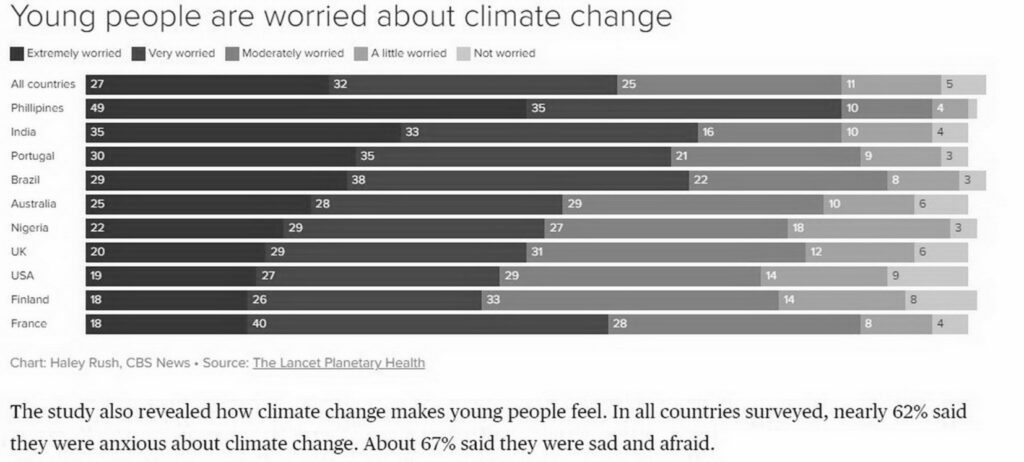by Lisa Mendum
Research shows many children and youth are extremely worried about climate change leading to what we know today as climate anxiety. My own children experience varying degrees of this as do many of their friends. A study published last year of 10,000 16 to 25-year-olds around the world revealed that 59% were very or extremely worried and more than 45% said their feelings about climate change negatively affected their daily life and functioning.

The graph in this article shows 91% of children and youth in the US experience some degree of worry from extremely worried to a little worried, leaving only 9% who are not. 91% would account for 5,117 students currently enrolled in our school system. A sobering statistic. It is proven that hands-on engagement helps children to feel in control, mitigating feelings of helplessness and hopelessness.

With our current use of single-use plastics, the Great Pacific Garbage Patch, which is already twice the size of Texas, will be 6 times the size of Texas by 2030. Take a second to think about what that looks like. Thankfully, reducing your plastic consumption is extremely easy.
Here are a few suggestions from my house to yours:
- switch to buying milk in waxed paper containers instead of plastic jugs.
- switch to laundry sheets that dissolve in water, packaged in a box, not a plastic container.
- switch dishwasher and laundry detergent to the plant-based plastic pouch variety. Companies like Dropps package these in a small compostable cardboard box.
- switch hand soap and shower gel to bar soap, just like the old days! Shampoo, conditioners, and moisturizers are also widely available in bars too.
- commit to always using a refillable water bottle (and coffee cup when possible). The MDC recently announced that the water quality in our town is exceptional Not many towns can boast about this!
- switch to compostable trash bags that break down in a month instead of 10-20 years.
- Baby wipes, face wipes, cleaning wipes, also many brands of tissue and teabags are made with woven plastic that do not break down in a landfill. Choose biodegradable alternatives and read labels carefully. Cleaning cloths can be washed in your washing machine.
- plastic plates and utensils for parties and gatherings can be washed and reused many times. Handwash or choose a cool/delicate cycle in your dishwasher.
- Ziploc bags are always washed and reused in my house unless they’ve been used for meat and fish.
Depending on your consumption of things like soda and bottled water, an average family of four could remove anywhere from 250 to 1,500 plastic bottles a year from our environment. With the average recycling rate of plastic now at just 5% in the US, that’s a lot of plastic that ends up in landfills, waterways, oceans, and the food that we eat.
These are simple changes that will make a big difference.
TALK Environment Team seeks to promote conversations about the environment and climate change in our community. We encourage community writing for this column. If you have a related topic that you are passionate about, please send your ideas and suggestions for future articles to: prez@talk-action.org. All articles are archived on the TALK website.
